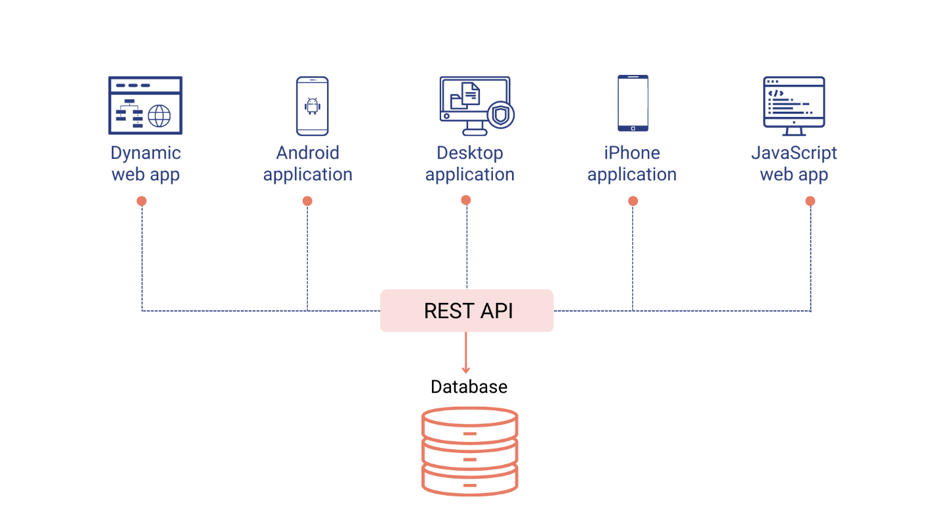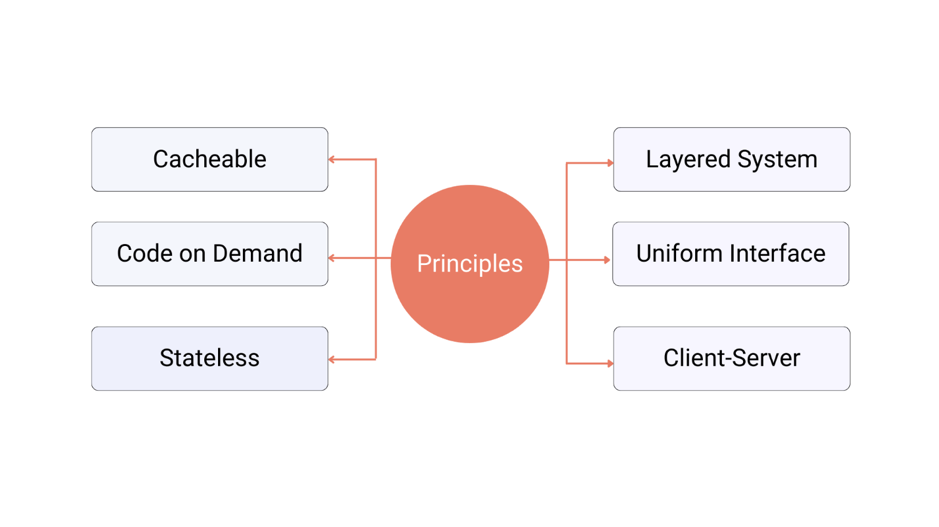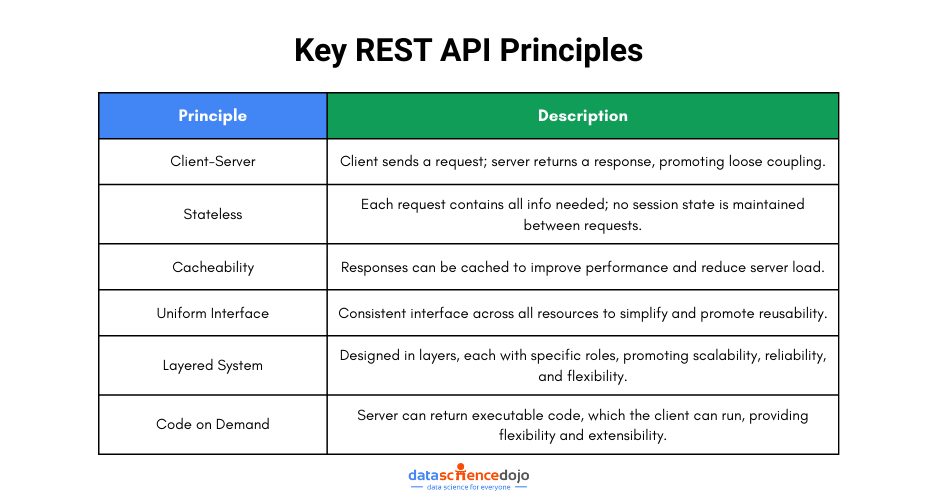As technology advances, we continue to witness the evolution of web development. One of the most important aspects of web development is building web applications that interact with other systems or services.
In this regard, the use of APIs (Application Programming Interfaces) has become increasingly popular. Amongst the different types of APIs, REST API has gained immense popularity due to its simplicity, flexibility, and scalability. In this blog post, we will explore REST API in detail, including its definition, components, benefits, and best practices.
What is REST API?
REST (Representational State Transfer) is an architectural style that defines a set of constraints for creating web services. REST API is a type of web service that is designed to interact with resources on the web, such as web pages, files, or other data. In the illustration below, we are showing how different types of applications can access a database using REST API.

REST API is a widely used protocol for building web services that provide interoperability between different software applications. Understanding the principles of REST API is important for developers and software engineers who are involved in building modern web applications that require seamless communication and integration with other software components.
By following the principles of REST API, developers can design web services that are scalable, maintainable, and easily accessible to clients across different platforms and devices. Now, we will discuss the fundamental principles of REST API.
REST API Principles:
- Client-Server Architecture: REST API is based on the client-server architecture model. The client sends a request to the server, and the server returns a response. This principle helps to certain concerns and promotes loose coupling between the client and server.
- Stateless: REST API is stateless, which means that each request from the client to the server should contain all the necessary information to process the request. The server does not maintain any session state between requests. This principle makes the API scalable and reliable.
- Cacheability: REST API supports caching of responses to improve performance and reduce server load. The server can set caching headers in the response to indicate whether the response can be cached or not.
- Uniform Interface: REST API should have a uniform interface that is consistent across all resources. The uniform interface helps to simplify the API and promotes reusability.
- Layered System: REST API should be designed in a layered system architecture, where each layer has a specific role and responsibility. The layered system architecture helps to promote scalability, reliability, and flexibility.
- Code on Demand: REST API supports the execution of code on demand. The server can return executable code in the response to the client, which can be executed on the client side. This principle provides flexibility and extensibility to the API.

Now that we have discussed the fundamental principles of REST API, we can delve into the different methods that are used to interact with web services. Each HTTP method in REST API is designed to perform a specific action on the server resources.
REST API Methods:
1. GET Method:
The GET method is used to retrieve a resource from the server. In other words, this method requests data from the server. The GET method is idempotent, which means that multiple identical requests will have the same effect as a single request.
Example Code:
‘requests’ is a Python library used for making HTTP requests in Python. It allows you to send HTTP/1.1 requests extremely easily. With it, you can add content like headers, form data, multipart files, and parameters via simple Python libraries.
2. POST Method:
The POST method is used to create a new resource on the server. In other words, this method sends data to the server to create a new resource. The POST method is not idempotent, which means that multiple identical requests will create multiple resources.
Example Code:
3. PUT Method:
The PUT method is used to update an existing resource on the server. In other words, this method sends data to the server to update an existing resource. The PUT method is idempotent, which means that multiple identical requests will have the same effect as a single request.
Example Code:
4. DELETE Method:
The DELETE method is used to delete an existing resource on the server. In other words, this method sends a request to the server to delete a resource. The DELETE method is idempotent, which means that multiple identical requests will have the same effect as a single request.
Example Code:
How these Methods Map to HTTP Methods:
- GET method maps to the HTTP GET method.
- POST method maps to the HTTP POST method.
- PUT method maps to the HTTP PUT method.
- DELETE method maps to the HTTP DELETE method.
In addition to the methods discussed above, there are a few other methods that can be used in RESTful APIs, including PATCH, CONNECT, TRACE, and OPTIONS. The PATCH method is used to partially update a resource, while the CONNECT method is used to establish a network connection with a resource.
You might also like: API Testing with Postman & Python
The TRACE method is used to retrieve diagnostic information about a resource, while the OPTIONS method is used to retrieve the available methods for a resource. Each of these methods serves a specific purpose and can be used in different scenarios.
To use REST API methods, you must first find the endpoint of the API you want to use. The endpoint is the URL that identifies the resource you want to interact with. Once you have the endpoint, you can use one of the four REST API methods to interact with the resource.
Understanding the different REST API methods and how they map to HTTP methods is crucial for building successful applications. By using REST API methods, developers can create scalable and flexible applications that can interact with a wide range of resources on the web.
Best Practices for Designing RESTful APIs
RESTful APIs have become a popular choice for building web services because of their simplicity, scalability, and flexibility. However, designing and implementing a RESTful API that meets industry standards and user expectations can be challenging. Here are some best practices that can help you create high-quality and efficient RESTful APIs:
- Follow RESTful principles: RESTful principles include using HTTP methods appropriately (GET, POST, PUT, DELETE), using resource URIs to identify resources, returning proper HTTP status codes, and using hypermedia controls (links) to guide clients through available actions. Adhering to these principles makes your API easy to understand and use.
- Use nouns in URIs: RESTful APIs should use nouns in URIs to represent resources rather than verbs. For example, instead of using “/create_user”, use “/users” to represent a collection of users and “/users/{id}” to represent a specific user.
- Use HTTP methods appropriately: Each HTTP method (GET, POST, PUT, DELETE) should be used for its intended purpose. GET should be used to retrieve resources, POST should be used to create resources, PUT should be used to update resources, and DELETE should be used to delete resources.
- Use proper HTTP status codes: HTTP status codes provide valuable information about the outcome of an API call. Use the appropriate status codes (such as 200, 201, 204, 400, 401, 404, etc.) to indicate the success or failure of the API call.
- Provide consistent response formats: Provide consistent response formats for your API, such as JSON or XML. This makes it easier for clients to parse the response and reduces confusion.
- Use versioning: When making changes to your API, use versioning to ensure backwards compatibility. For example, use “/v1/users” instead of “/users” to represent the first version of the API.
- Document your API: Documenting your API is critical to ensure that users understand how to use it. Include details about the API, its resources, parameters, response formats, endpoints, error codes, and authentication mechanisms.
- Implement security: Security is crucial for protecting your API and user data. Implement proper authentication and authorization mechanisms, such as OAuth2, to ensure that only authorized users can access your API.
- Optimize performance: Optimize your API’s performance by implementing caching, pagination, and compression techniques. Use appropriate HTTP headers and compression techniques to reduce the size of your responses.
- Test and monitor your API: Test your API thoroughly to ensure that it meets user requirements and performance expectations. Monitor your API’s performance using metrics such as response times, error rates, and throughput, and use this data to improve the quality of your API.
In the previous sections, we have discussed the fundamental principles of REST API, the different methods used to interact with web services, and best practices for designing and implementing RESTful web services. Now, we will examine the role of REST API in a microservices architecture.
The Role of REST APIs in a Microservices Architecture
Microservices architecture is an architectural style that structures an application as a collection of small, independent, and loosely coupled services, each running in its process and communicating with each other through APIs. RESTful APIs play a critical role in the communication between microservices.
Here are some ways in which RESTful APIs are used in a microservices architecture:
1. Service-to-Service Communication:
In a microservices architecture, each service is responsible for a specific business capability, such as user management, payment processing, or order fulfillment. RESTful APIs are used to allow these services to communicate with each other. Each service exposes its API, and other services can consume it by making HTTP requests to the API endpoint. This decouples services from each other and allows them to evolve independently.
2. Loose Coupling:
RESTful APIs enable loose coupling between services in a microservice architecture. Services can be developed, deployed, and scaled independently without causing any impact on the overall system since they only require knowledge of the URL and data format of the API endpoint of the services they rely on, instead of being aware of the implementation specifics of those services.
3. Scalability:
RESTful APIs allow services to be scaled independently to handle increasing traffic or workload. Each service can be deployed and scaled independently, without affecting other services. This allows the system to be more responsive and efficient in handling user requests.
4. Flexibility:
RESTful APIs are flexible and can be used to expose the functionality of a service to external consumers, such as mobile apps, web applications, and other services. This allows services to be reused and integrated with other systems easily.
5. Evolutionary Architecture:
RESTful APIs enable an evolutionary architecture, where services can evolve without affecting other services. New services can be added, existing services can be modified or retired, and APIs can be versioned to ensure backward compatibility. This allows the system to be agile and responsive to changing business requirements.
6. Testing and Debugging
RESTful APIs are easy to test and debug, as they are based on HTTP and can be tested using standard tools such as Postman or curl. This allows developers to quickly identify and fix issues in the system.
In conclusion, RESTful APIs play a critical role in microservices architecture, enabling service-to-service communication, loose coupling, scalability, flexibility, evolutionary architecture, and easy testing and debugging.
Summary
This article provides a comprehensive overview of REST API and its principles, covering various aspects of REST API design. Through its discussion of RESTful API design principles, the article offers valuable guidance and best practices that can help developers design APIs that are scalable, maintainable, and easy to use.
Additionally, the article highlights the role of RESTful APIs in microservices architecture, providing readers with insights into the benefits of using RESTful APIs in developing and managing complex distributed systems.




